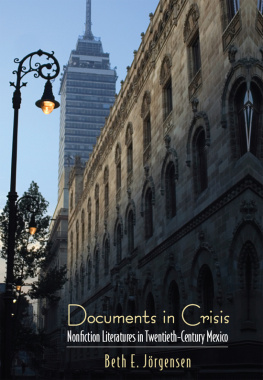This edition is published by PICKLE PARTNERS PUBLISHING www.picklepartnerspublishing.com
To join our mailing list for new titles or for issues with our books
Or on Facebook
Text originally published in 2007 under the same title.
Pickle Partners Publishing 2013, all rights reserved. No part of this publication may be reproduced, stored in a retrieval system or transmitted by any means, electrical, mechanical or otherwise without the written permission of the copyright holder.
Publishers Note
Although in most cases we have retained the Authors original spelling and grammar to authentically reproduce the work of the Author and the original intent of such material, some additional notes and clarifications have been added for the modern readers benefit.
We have also made every effort to include all maps and illustrations of the original edition the limitations of formatting do not allow of including larger maps, we will upload as many of these maps as possible.
Abstract
Douglas Cubbison, the Command Historian for the 10th Mountain Division, conducted a series of interviews with the soldiers of the 10th Mountain Division in Afghanistan during January 2007, along with several additional interviews conducted in February 2007 at Fort Drum, New York. The interviews are fairly wide ranging in the topics covered but all center around one particularly memorable event for the soldier being interviewed, such as an ambush, a patrol, a firefight, a helicopter crash, or a hero ceremony. This transcript is from the interview with First Lieutenant Jorgensen, Bravo Troop, 3rd Squadron, 71st Cavalry, conducted on 22 January 2007 at Forward Operating Base Naray, Afghanistan. The other interviews conducted by Cubbison can be found at the transcripts for Brigadier General James Terry, First Lieutenant Justin L. Sax, Sergeant First Class Connors, Sergeant First Class Eban Duer III, Sergeant First Class Hunsacker, Staff Sergeant John Bickford, Staff Sergeant Anthony Nilon, Sergeant Jemon Calhoun, Specialist Joe Mattie, and Specialist Edward J. Vasquez.
Interview with 1LT Jorgensen 22 January 2007
DC: This is Doug Cubbison, Im here at forward operating base (FOB) Naray on 22 January 2007 and Im talking with First Lieutenant Jorgensen (J). Lieutenant Jorgensen has worked as a fire support officer (FSO) and executive officer (XO) with Bravo Troop, the famous Barbarians of 3-71 Cavalry. And were talking about the Operation Enduring Freedom (OEF) deployment here. Lieutenant Jorgensen, when did you join the squadron?
J: I got to the squadron in April 05, right after I got done with airborne school at Fort Benning, Georgia. I teamed up with the team here right before the last major field operation for the spring back at Fort Drum, New York, before training wrapped up.
DC: So you had about six months to train with the squadron?
J: With the squadron. I didnt train with the troop until right before we got in theater.
DC: What was your initial job with the squadron?
J: They collected all the fire support officers and fires guys, there were very few of us, so they put us all in headquarters and headquarters troop (HHT) for centralization, for training. When we got over here they farmed us out to the troops as they needed them.
DC: What type of training did they do that prepared you to do your fire support function?
J: Well, the very obvious, call for fire. The refresher classes, repetition over and over. We went to the field in September where virtually all we did for the entire month was to call for fire with the mortars. So that gave us a very good relationship with the mortars, and a good feel with how to control them and how to use them. All the staff sergeants (E6s) and above went to the Joint Firepower Course at Nellis Air Force Base, Nevada so that we knew how to call in attack aircraft and close air support, A-10s being ones that we used several times over here.
DC: At the squadron did you have a chance to work with attack helicopters and become familiar with their techniques?
J: A couple of times. We had a fire support exercise in the middle of October that we used Kiowas. We really didnt use Apaches much until we got in theater. We had a train up with them at FOB Salerno before we moved up north here. Really the first true interface with them was in April when we had a fire fight in Challis.
DC: When did you join the troop then?
J: I got to Bravo Troop on February 15, 2006.
DC: Was that here in theater?
J: Yes. They came two days earlier. We had a staggered deployment here. I got at FOB Salerno, they were already there, they basically came and grabbed my bags, and Ive been at Bravo Troop ever since.
DC: Lets talk about the first mission that you went on as a FSO.
J: First mission, you dont count the left seat-right seats rides?
DC: Well, well touch that real quick. Did you feel that that transition had any value for you?
J: It did and it didnt. It was good to see the area, Asadabad, but the unit that we relief in place (RIPd) with, they had only come to Salerno weeks before, so they really didnt have the insight to tell us, Okay, these are the guys you need to talk to, these are the power porters in the area. It was really, Here is the area, were getting on the airplane. The first true mission was 711, in mid-March. And it was basically just watching a couple of infill routes from Pakistan, a couple of day and night missions, I remember the weather was God-awful, other than that it was a pretty easy operation.
DC: No contact?
J: No contact.
DC: The first major operation then?
J: The first operation, Id have to go with Operation Mountain Lion at the division level. We had been down at Salerno to mid-April, then they pulled us up to the northern area. It was the Chelkia Valley, we were sitting up above a quaint little town called Chaliz for about three weeks or four weeks. That was the first major operation when the whole squadron was doing something at one point, around the whole area.
DC: What was the troops mission?
J: From our observation post (OP), it was to watch the town of Chaliz. We had headquarters with us, and we had one platoon, then we had two other platoons on two different mountains basically watching different areas, to see who moved, stuff like that.
DC: How did you do the insertion at the troop level?
J: It was all helicopter. All Chinook. It was...its funny because we do a lot of planning here from satellites (satellite photos) and you can look top down and say Well, that looks flat. And then we got there and it was a postage stamp. And it was a terraced farmland, and the landing zone (LZ) they landed us on couldnt have been any larger than this area here, maybe 20 feet by 50 feet across, it was tiny.
DC: Small little agricultural terrace?
J: Yeah. The back wheels of the Chinook touched down, they dropped the ramp, and we got out. It was funny because they were supposed to drop a Gator with us to help shuttle supplies. And the first thing I did was to reach for my radio and say You can cancel the Gator because there was absolutely no way for that thing to go anywhere. It was all just terraces sloping down.








